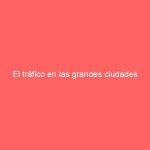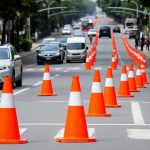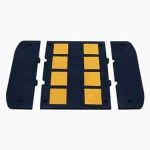Introduction
Speed Bumps for Roads: Promoting Responsible Driving and Community Safety
Welcome to the world of speed bumps – those small, yet powerful road features that have a big impact on promoting responsible driving and community safety. These simple structures, often overlooked, play a crucial role in creating safer road environments for both drivers and pedestrians. In this article, we will explore the benefits and challenges of using speed bumps, and why they are an important tool in promoting responsible driving.
But first, let’s define what speed bumps are. These are raised areas on roads that force drivers to slow down and reduce their speed. They are usually made of asphalt, concrete, or rubber and can range in size and shape. Their purpose is to slow down vehicles and promote safer driving.
The aim of this article is to shed light on the need for speed bumps on roads and their impact on promoting responsible driving. We will delve into the benefits of speed bumps, address potential challenges, and discuss the importance of community involvement in their installation. So let’s buckle up and dive into the world of speed bumps.
The Need for Speed Bumps on Roads
Speeding is a major concern on roads and has resulted in numerous accidents and fatalities. According to the National Highway Traffic Safety Administration, speeding was a contributing factor in 26% of all traffic fatalities in 2019. This highlights the need for effective measures to reduce speeding and promote responsible driving.
Speed bumps have been proven to be an effective solution in reducing speed on roads. Studies have shown that speed bumps can decrease vehicle speed by 22-44% in areas where they are installed. This not only makes the roads safer for drivers, but also for pedestrians and other road users.
While some may have concerns about the use of speed bumps, such as noise and inconvenience for drivers, their benefits far outweigh these drawbacks. Speed bumps serve as physical reminders for drivers to slow down and can potentially lead to lower insurance rates and cost savings for communities. Proper planning and placement of speed bumps can also address any potential challenges, such as emergency vehicle access.
Benefits of Speed Bumps for Responsible Driving
Speed bumps serve as a physical reminder for drivers to slow down, creating a safer road environment for all users. Studies have shown that the presence of speed bumps can significantly reduce speeding and reckless driving, leading to fewer accidents and fatalities. This not only promotes responsible driving but also has the potential for lower insurance rates and cost savings for communities.
Additionally, speed bumps can be implemented in a variety of ways, such as temporary or permanent installations, making them a flexible and effective solution for promoting responsible driving. Successful implementation of speed bumps in various communities has shown positive results in reducing speeding and improving overall road safety.
While there may be concerns about the cost and maintenance of speed bumps, proper planning and community involvement can address these challenges. It is important to consider alternative solutions and involve local authorities and community members in the decision-making process to ensure the best outcome for all. Overall, the benefits of speed bumps for road responsible driving and community safety are significant and should be considered in promoting a safer and more responsible road culture.
Challenges and Considerations of Installing Speed Bumps
While speed bumps have been proven to be effective in promoting responsible driving and community safety, they are not without their challenges and considerations. One of the main concerns is the cost and maintenance of speed bumps. It is important for communities to carefully consider the financial implications of installing and maintaining speed bumps. Additionally, proper installation and placement of speed bumps is crucial to ensure their effectiveness. This may require coordination with road design and emergency vehicle access. It is also important to involve the community in the decision-making process and address any potential concerns before installation. Alternative solutions or complementary measures can also be considered to address these challenges, such as implementing traffic calming measures or increasing police presence in the area. Overall, proper planning and community support are essential for successful implementation of speed bumps.
Community Involvement and Support for Speed Bumps
Community involvement and support are essential for the successful implementation of speed bumps on roads. Local residents play a crucial role in advocating for speed bumps in their neighborhoods. By voicing their concerns about speeding and reckless driving, they can bring attention to the need for speed bumps in their communities.
Involving local authorities and government agencies in the decision-making process is also crucial. They can provide valuable insights and data on the best placement and design of speed bumps. This collaboration can help address concerns about the cost and maintenance of speed bumps.
Successful initiatives for installing speed bumps have been driven by community members, with the support of local authorities. By working together, communities can create safer road environments for all users. Speed bumps can also improve community relationships and promote a sense of responsibility for road safety.
It is important to involve the community and local authorities in the planning and decision-making process to ensure the successful implementation of speed bumps. By working together, we can promote responsible driving and create safer roads for everyone.
Conclusion
In conclusion, speed bumps are an effective tool in promoting responsible driving and community safety. By acting as physical reminders for drivers to slow down, they greatly reduce speeding and reckless driving. The statistics and data support their effectiveness in reducing accidents and creating safer road environments for all users. While there may be concerns about cost and maintenance, proper planning and community involvement can help address these challenges. Moreover, speed bumps have the potential to save communities money through lower insurance rates and cost savings. By involving local authorities and garnering support from the community, speed bumps can be successfully implemented in neighborhoods. Let us all work together towards responsible driving and consider the use of speed bumps for the greater good of our roads and communities.







